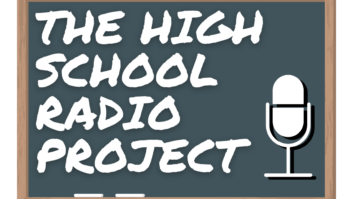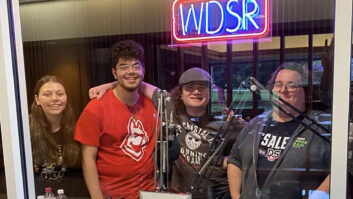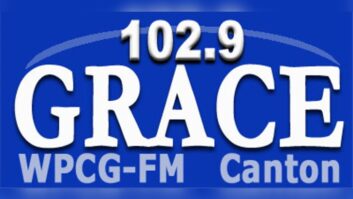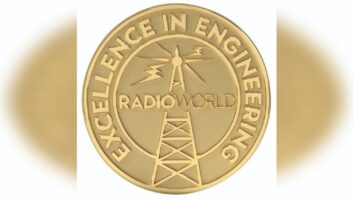
The author is executive director, broadcast technology at Xperi Corp.
As broadcasters, we often limit our perception of radio to audio programming. But we shouldn’t.

Today, Radio Data Systems (RDS) and HD Radio technology mean that data can be sent over the air through radio’s cost-effective and reliable, one-to-many delivery system. Each week, radio broadcast touches the lives of over 93% of the U.S. population, with no point-to-point connection, conveying simplex data effortlessly to a single unit or millions of devices.
Because it’s scalable, broadcasters can add millions of new data “listeners,” without increasing infrastructure costs or reducing existing service quality, for analog and digital broadcasts.
While FM analog RBDS services offer limited data, text or messaging, HD Radio technology enables digital audio programs and much higher levels of data services to automobiles, homes and portable devices. In other words: digital radio IoT.
Internet of Things
The Internet of Things, or IoT, has service providers who want to deliver content over a secure cost-effective platform, but security is a big concern.
At present, most connected devices allow bidirectional communication, with vulnerability to hacking. Configuration data, including personal information, may be exposed. Plus, there is the challenge of keeping those devices connected on in-home networks.
Unidirectional communication can mitigate these challenges: device applications can benefit from a one-way secure communication path.
Green initiatives
Recent regulations on Green House Gas (GHG) emissions mandate an energy shift from fossil fuels to an already oversubscribed electrical power grid, impacting electric energy pricing, billing and consumption. Radio is poised to play a significant role in this changing landscape.
On Aug. 5, 2021, President Joe Biden signed an executive order targeting that 50% of all automobiles be zero-emission by 2030, jump-starting a dramatic shift toward EVs. In 2020, California Governor Gavin Newsom signed an executive order banning all in-state sales of gasoline-fueled vehicles by 2035. In addition, the California Air Resources Board, Natural Gas (NG) plans to tighten rules on natural gas for home heating and hot water, effective in 2023.
Real-time demand/response
The proliferation of electric vehicles, and the shift from gas-fired heating to electric, will further burden an already overtaxed power grid. Constructing new generation plants, or adding battery storage, comes at a high cost to utilities, without addressing the variable nature of the load.
Creation of an intelligent demand/response network for managing power usage offers a solution. How? Providing real-time energy pricing to devices means they become “smarter” about energy cost, use and charging decisions — and this is where radio has a critical role to play.
The Consumer Technology Association has defined CTA-2045 as a modular communications interface (MCI) to facilitate communications with residential devices for applications such as energy management.
Among these are:
- Electric Vehicles (EV) charging systems
- Water Heaters
- Heating, Ventilating, and Air Conditioning (HVAC)
- Emergency shutdown of electricity and gas
- Smart City Lighting management and control
- Pool and spa pumps
- Autonomous vehicles
- Connected car
As the number of electric vehicles increases, peak use will exceed the design limits of the electric grid, overloading it with potentially disastrous consequences, including wildfires that cause loss of life and property. Rolling blackouts in California have become commonplace to reduce these risks.
Smart charging systems and utility control data mean EV chargers could manage charging times to avoid peak power demands, optimize charging costs. This requires tight collaboration between the auto industry, electricity providers, and data service companies, which is where radio can be indispensable: conveying pricing and control data. While this data distribution may not be exclusive to radio, it just may be the best fit due to security, reliability and cost concerns.
The competitive landscape
Sending 1 MB of data to 10,000 IoT devices requires 1 GB capacity for cellular, BUT only 1 MB for radio.
While 5G’s capacity and interconnectivity can offer advantages to connected cars and personal entertainment, 5G, like the power grid, may be oversubscribed before it reaches mass adoption. In 2020, connected cars and autonomous vehicles will generate 380 GB/hour to over 5 TB/hour of data, according to the Automotive Edge Computing Consortium.
A limitation on 5G networks is that they are yet to be fully deployed. 5G build-out in high population density and urban locations may be cost-effective for providers, but suburban and rural deployment will be a challenge given low population density and high rollout costs.
This is an opportunity for radio broadcasters, who offer broad reach through over 2,400 digital HD Radio stations, as well as scalability and reliability.
Today, through HD Radio data technology, stations are already transmitting real-time traffic and weather data directly to car navigation systems. Multiple automakers are working with HD Radio technology developer, Xperi Corp., to investigate, demonstrate and test additional data services, including software and ECU updates, map updates, navigation corrections, customer relationship management and more.
What is needed
Several components need to coalesce to achieve digital radio IoT. These include a content distribution system and a backend that enables service providers to connect to local radio stations or subscribers to provide content over available data bandwidth.
Radio stations could register to participate in data services and allow part of their data capacity to be used for services or applications. For example, an application provider (utility, city management, etc.) could have a data service or application that needs to communicate to their devices. The cloud distribution system would manage the data input and then route to the appropriately registered stations in the given market. Authentication, scheduling, and routing would happen automatically. The radio station simply has to configure their HD Radio Importer to open the available data ports. This data content distribution system has been prototyped and is operational in selected markets.
At the consumer end is a low-cost, low-power HD Radio-enabled IoT receiver module in the form of a plug-in card for an existing CTA-2045 compatible smart appliance or, ultimately, built-in to the appliance circuit board. The IoT module scans the band, detecting the application’s required data service. Once data is available, the HD Radio IoT device pulls the appropriate data from the digital broadcast and provides the content to the smart appliance application.
Xperi is testing this end-to-end system in several markets, gathering data on coverage and data reliability to create Quality of Service (QoS) metrics for these data applications. Xperi, together with the broadcast community and our development partners, looks forward to bolstering radio’s future with digital radio IoT, providing game-changing, cost-efficient and reliable data transmission services.












